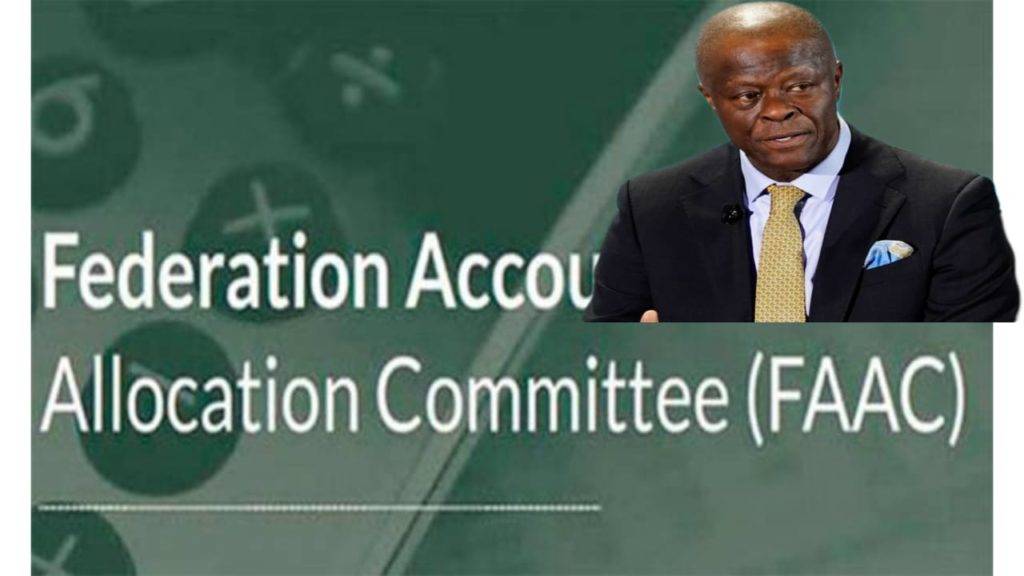The Federation Account Allocation Committee (FAAC) declared a remarkable distribution of N1.13 trillion in earnings for December 2023. This marked a substantial increase of N500 billion compared to the previous month’s allocation, demonstrating a positive financial trend. The committee, led by Dr. Oluwatoyin Madein, the Accountant General of the Federation, disclosed the breakdown of this staggering sum. The total distributable revenue comprised N363.188 billion as distributable statutory revenue, N458.622 billion as distributable Value Added Tax (VAT) revenue, N17.855 billion from Electronic Money Transfer Levy, and N287.743 billion as Exchange Difference revenue.
Moreover, a significant portion of N57.92 billion (13% of mineral revenue) was allocated to benefiting states as derivation revenue, showcasing a commitment to equitable distribution and regional development. This surge in revenue is attributed to the removal of subsidies and the unification of the country’s exchange rate by the current administration, leading to a noteworthy boost in the federation account.
Federation Account Allocation Committee :Detailed Revenue Components and Impacts
The Federation Account Allocation Committee (FAAC) further detailed the revenue components, emphasizing the critical factors influencing the December windfall. The total revenue available in December 2023 reached N1,674.230 billion, reflecting a substantial financial influx. Notably, gross statutory revenue slightly decreased to N875.382 billion, a difference of N7.178 billion from November 2023. The statement highlighted that the gross revenue from VAT in December 2023 surged to N492.506 billion, significantly surpassing the N360.455 billion recorded in the preceding month.
Despite this positive trend, the committee acknowledged a decrease in oil and gas royalties while observing significant increases in Companies Income Tax, Excise Duty, Petroleum Profit Tax, VAT, and Electronic Money Transfer Levy. Import Duty and CET Levies experienced a marginal decrease, contributing to the overall revenue dynamics. This detailed breakdown offers transparency and insights into the various economic factors shaping the financial landscape.

Distribution Breakdown: Federal, State, and Local Government Shares
The Federation Account Allocation Committee (FAAC)’s communique outlined the meticulous breakdown of the N1.13 trillion distribution, ensuring transparency in resource allocation. From the total distributable revenue, the Federal Government received N383.872 billion, State Governments received N396.693 billion, and Local Government Councils received N288.928 billion. Furthermore, N57.915 billion (13% of mineral revenue) was allocated to benefiting states as derivation revenue, emphasizing a commitment to addressing regional disparities and promoting inclusive growth.
Additionally, the distribution of specific revenue streams to each tier of government, including statutory revenue, VAT revenue, Electronic Money Transfer Levy, and Exchange Difference revenue, was detailed. This level of transparency fosters accountability and provides stakeholders with a clear understanding of the financial inflow to each government level.
Federation Account Allocation Committee (FAAC): Economic Indicators and Future Considerations
The Federation Account Allocation Committee (FAAC)’s report delved into the economic indicators, revealing a positive balance in the Excess Crude Account (ECA) amounting to $473,754.57. This signals financial stability and prudent fiscal management. As the country experiences fluctuations in revenue from different sources, the committee highlighted the noteworthy increases in certain taxes and levies, while also acknowledging the decrease in oil and gas royalties.
Looking ahead, stakeholders and policymakers will need to monitor these economic indicators closely, considering the dynamic nature of revenue streams. The report sets the stage for informed decision-making, emphasizing the need for a balanced and diversified economic approach to sustain the positive momentum in revenue generation.

The country has witnessed an unprecedented surge in revenue, creating an optimistic outlook for accelerated development at both the state and local levels. This financial windfall promises to elevate the standard of living for citizens, addressing long-standing issues exacerbated by questionable allocations.
Unraveling the Revenue Surge
The surge in revenue, notably higher than previous years, has sparked interest and speculation among economists and policymakers alike. Sources reveal that this windfall stems from a combination of increased tax collections, improved economic activities, and prudent fiscal management. The surge, though welcomed, also raises questions about the transparency of fund allocation and the need for rigorous oversight.
Genuine Development Initiatives
As hopes soar, there is a collective expectation that this newfound financial strength will be channeled into genuine development initiatives. The focus is not just on large-scale projects but also on grassroots-level programs that directly impact the lives of citizens. Analysts emphasize the need for a well-thought-out development plan that addresses infrastructure, education, healthcare, and employment opportunities.
Federation Account Allocation Committee (FAAC): Fast-Tracking Progress at the State Level:
With the state positioned as a key player in the development landscape, there is a call for expeditious action. Leaders are urged to leverage this revenue surge to fast-track projects that have long lingered in the planning stages. The emphasis is on fostering an environment conducive to business growth, creating jobs, and fortifying the state’s economic foundation.
Enhancing Local Communities
At the local level, the infusion of additional funds holds the potential to transform communities. There is an urgent need to prioritize local development projects, ranging from improving basic amenities to supporting small businesses. This approach is viewed as essential for creating a ripple effect that positively impacts citizens across diverse demographics.
Table of Contents
Discover more from OGM News NG
Subscribe to get the latest posts sent to your email.














